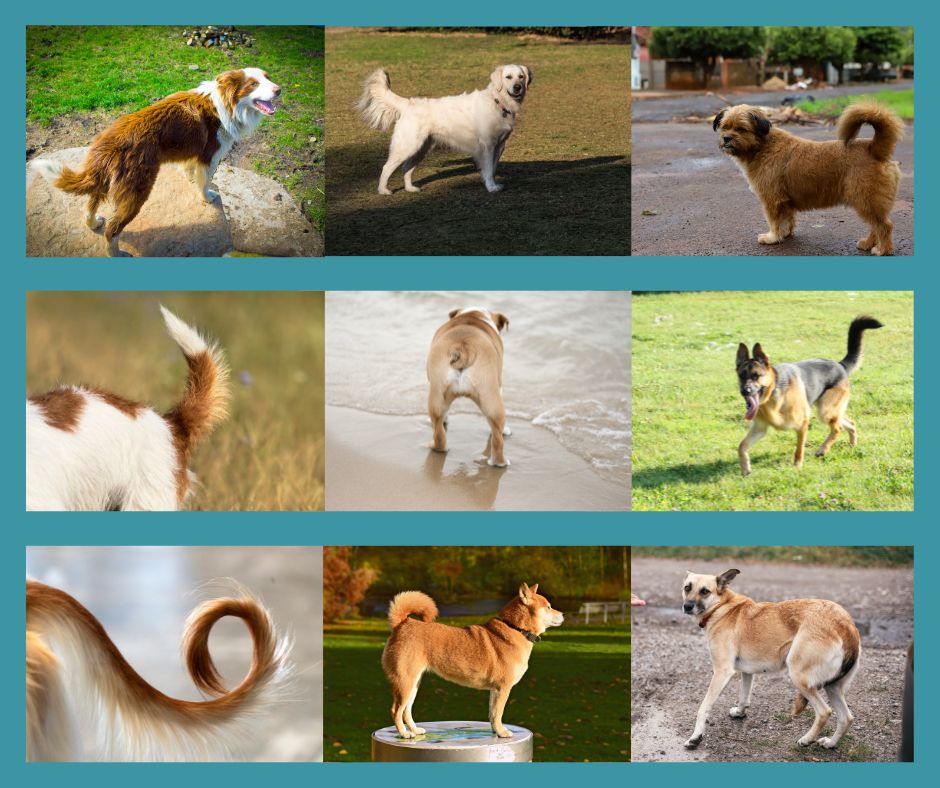Learning about your dog’s body language can better help you understand their behaviour, when they are happy or anxious, and how to better care for them. In this article from the Body Language Series we look at Dog’s tail positions.
A lot of people think if a dog’s tail is wagging, they are happy, but it’s not necessarily so. It is just an indicator of the dog’s arousal level (or level of alertness).
First find out what the natural tail carriage is for the dog. The sign of a friendly tail wag is a relaxed, slow wag with the rest of the body soft as well (think of a wiggly Labrador).
If the tail is positioned very high (if it can be), and wagging very fast like a flag, the rest of the body still, and the dog is staring intently at something, this could mean the dog is quite concerned and it is best to stay away.
Remember that some breeds can naturally carry their tails high (like Huskies) and others have naturally low tail carriages (like sighthounds).
Natural tail carriage, tail may be wagging gently = Relaxed
Tail is loose and wiggly; it may also wag in a circular fashion (helicopter tail) = Happy
Tail held high and stiff with a rigid wag = Aroused/Excited (an enhanced state of alertness)
Tail between the legs = fearful/anxious
For dogs with no tail or a tight curled short tail like a bulldog, while the tail can’t go between the legs or be held high, the tail is an extension of the spine so look at the whole body. The movement of the tail can be very subtle.

It’s important to read the dog’s whole body and not just one part, plus take into consideration the context in which the behaviour is happening.
Learn more about your dog’s body language with our other articles in the body language series.
Understanding Your Dog’s Body Language – Ears
Understanding Your Dog’s Body Language – Eyes
Understanding Your Dog’s Body Language – The Mouth
Understanding Your Dog’s Body Language – Body Positions
